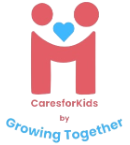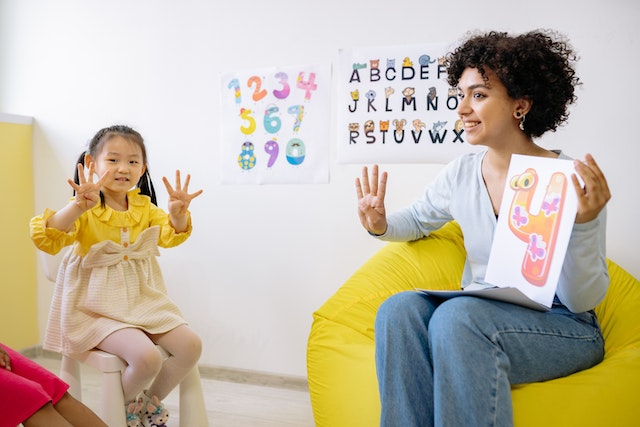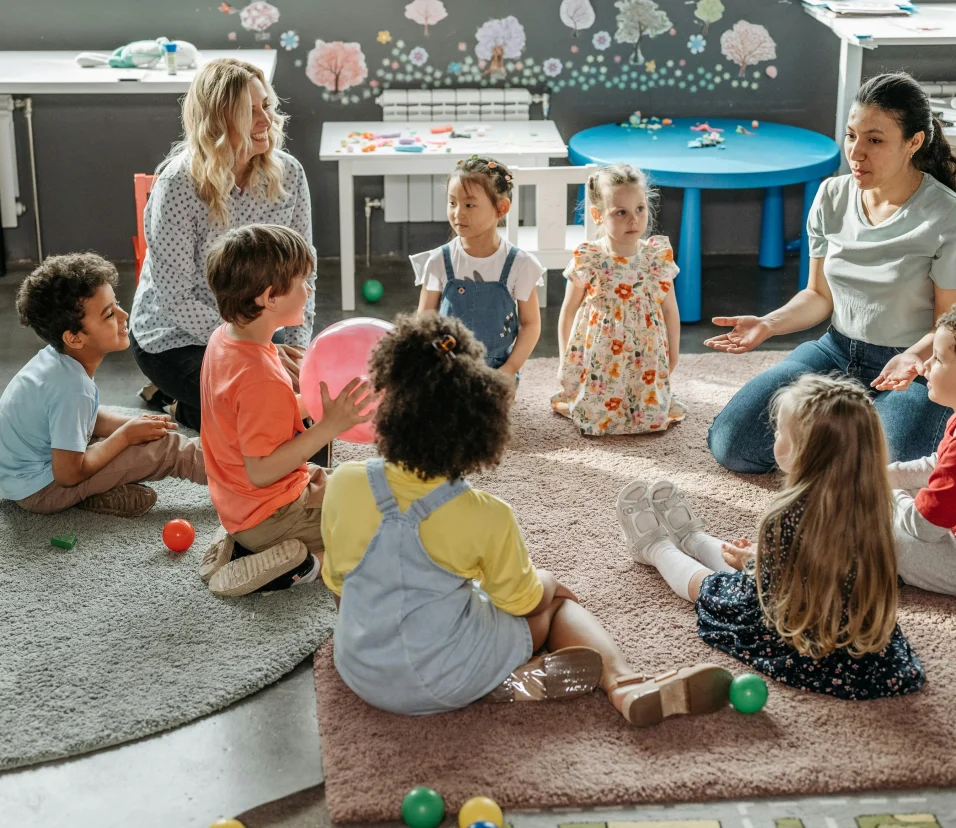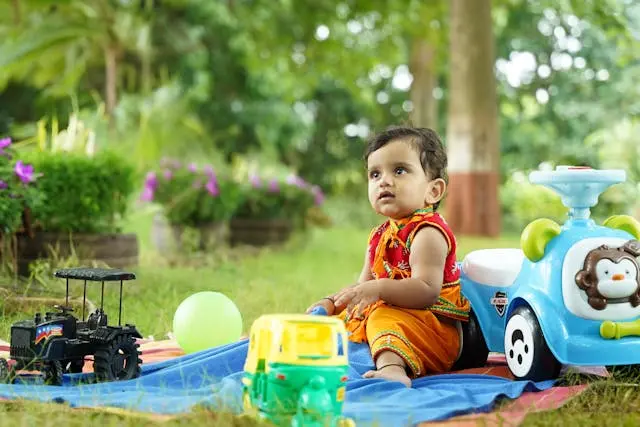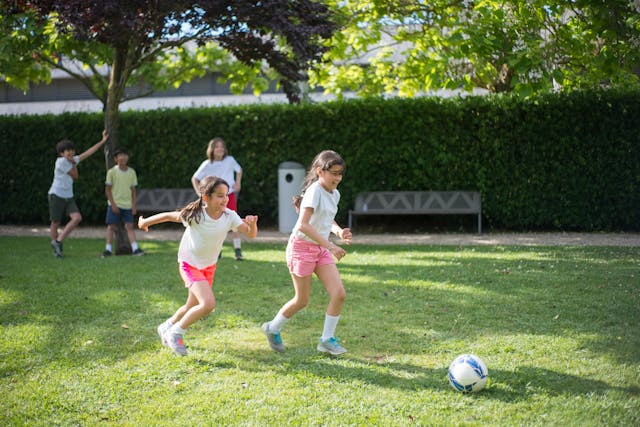Last updated on October 20, 2023
To succeed in your quest for a job in early education, it’s essential to be well-prepared. Take a moment to familiarize yourself with these frequently posed interview questions for preschool teachers, which will aid you in acing your job search and securing your ideal position.
As a preschool teacher, I know how crucial the role we play as early childhood educators, guiding children aged 2 to 5 years in their formative years. For a successful preschool teacher interview, it is essential to demonstrate a genuine passion for teaching young children. Besides that, candidates should also focus on specific areas to ensure they are well-prepared. Below are our top preschool teacher interview questions and answers to help you excel in your interview, along with some interview tips for preschool teachers:
Commonly Asked Preschool Teacher Interview Questions with Answers

1. How do you create a positive and inclusive classroom environment that meets the diverse needs of children from different backgrounds and abilities?
Answer: I promote a positive and inclusive classroom environment by celebrating diversity and individual differences and promoting cultural awareness and perspectives, creating a welcoming space for all. I do this by using culturally responsive teaching practices and exposing children to different cultures and traditions through celebrations. I also use positive behaviour support strategies and adapt my teaching strategies and materials to meet the needs of children with diverse learning styles and abilities. Besides that, I use a variety of inclusive strategies such as differentiated instruction, flexible grouping, and individualized support.
2. How do you communicate and build positive relationships with parents and caregivers, particularly in the context of Singapore’s multicultural society?
Answer: I communicate and build positive relationships with parents and caregivers by actively seeking their input and feedback, and by providing regular updates on their child’s progress and development. I respect and value cultural differences and engage parents and caregivers in meaningful ways such as inviting them to share their cultural practices and beliefs in class.
3. How do you integrate technology into your teaching practice? (for schools that have technology as part of their curriculum or projects)
Answer: I integrate technology into my teaching practice by using age-appropriate educational apps and interactive tools to enhance learning experiences and engage children. For example, I might use interactive whiteboards, tablets or educational computer games as part of my teaching methods
4. How do you support children’s social and emotional development, particularly in the context of Singapore’s emphasis on character and values education?
Answer: I support children’s social and emotional development by creating a caring and nurturing classroom environment that emphasizes values such as respect, self-awareness, responsible decision-making, and empathy. I do this mostly through modelling, story time as well as by using songs, finger play and so on for the younger children. For older children, I use strategies such as circle time, cooperative games and calming/support corners to promote social and emotional learning. This will help children develop positive character traits and moral values, thus promoting their social and emotional development.
5. How do you differentiate instruction to meet the individual needs of children, particularly those with learning differences or special needs?
Answer: I differentiate instruction by using a variety of teaching methods and materials to meet the individual needs of children, including those with learning differences or special needs. For example, I might provide visual aids, manipulatives or other scaffolds to support learning or work with educational support staff to develop individualized learning plans if such support/resources are available.
6. How do you foster children’s creativity and imagination?
Answer: I foster children’s creativity and imagination by providing open-ended and exploratory play experiences, and by encouraging children to take risks and experiment with new ideas. I also integrate creative/self-expressive activities such as music, dance, drama, and art into the curriculum.
7. How do you assess and track children’s progress and development?
Answer: I have assessed and tracked children’s progress and development using a variety of assessment methods, such as observations, checklists and formative and summative assessments, depending on the school’s requirements. I then, communicate regularly with parents and caregivers to keep them informed about their child’s progress and to learn more about possible reasons behind the child’s development. I also use data analysis and reflection to inform my teaching practice and identify areas for improvement.
8. How do you address challenging behaviour in the classroom?
Answer: I address challenging behaviour in the classroom by using positive behaviour support strategies that emphasize communication, empathy, and problem-solving. I also use classroom management techniques such as redirection, positive reinforcement and clear rules and expectations to maintain a safe and positive learning environment.
9. How do you support children’s language and literacy development?
Answer: I support children’s language and literacy development by using a variety of strategies such as story-telling, singing, reading, and writing. I also incorporate the use of both English and the child’s home language to promote bilingualism as far as possible.
10. How do you promote children’s cognitive development?
Answer: I promote children’s cognitive development by using a variety of hands-on and experiential learning activities that incorporate math, science, engineering, and technology. I also encourage STEM concepts such as problem-solving, critical thinking, and experimentation in the learning process.
11. How do you promote children’s independent learning and self-motivation?
Answer: I promote children’s independent learning and self-motivation by providing opportunities for exploration, inquiry, and self-directed learning through the use of materials and carefully curated learning centres. I also use strategies such as scaffolding, questioning, and goal-setting to support children’s learning and encourage them to take ownership of their learning process.
12. How do you work collaboratively with other teachers, educational support staff, and administrators to promote a positive and effective learning environment?
Answer: I work collaboratively with other teachers, educational support staff, and administrators by communicating effectively and engaging in active listening. I also believe strongly in sharing resources and expertise and collaborating on curriculum development and instructional planning which helps to increase collaboration and teamwork spirit.
13. How do you stay up-to-date with the latest research and best practices in early childhood education to ensure continuous professional development?
Answer: I stay up-to-date with the latest research and best practices in early childhood education by attending ECDA workshops, internal company trainings, reading professional literature, and engaging in collaborative learning opportunities with other educators.
14. How do you incorporate Singapore’s values and culture into your teaching practice?
Answer: I incorporate Singapore’s culture into my teaching practice by using educational materials like storybooks written by local authors, introducing traditional games and cultural events such as Chinese New Year and Hari Raya Aidilfitri. These activities also promote Singapore’s core values such as respect, responsibility, and resilience while teaching children about the local culture.
15. How do you promote children’s learning and development across multiple domains, including social-emotional, cognitive, physical, and language and literacy development?
Answer: I promote children’s learning and development across multiple domains by using a holistic and integrated approach that covers different areas of development. I also use play-based learning and hands-on activities to create engaging and meaningful learning experiences.
16. How do you create a safe and supportive learning environment that promotes children’s well-being and mental health?
Answer: I create a safe and supportive learning environment by prioritizing the well-being and mental health of all children. I use strategies such as mindfulness, self-regulation, and emotional awareness to promote children’s mental wellness and help them develop resilience and coping skills. These are strategies are incorporated using books, songs, role plays and so on.
17. How do you collaborate with parents and caregivers to support children’s learning and development?
Answer: I collaborate with parents and caregivers by establishing open lines of communication, sharing information about their child’s progress, and involving them in their child’s learning experience. I also engage families through termly parental involvement activities and family events to build strong partnerships with families and promote children’s holistic development.
18. How do you promote children’s physical development and health?
Answer: I promote children’s physical development and health by incorporating physical activity into the daily routine, providing opportunities for structured and unstructured outdoor play and exploration, and promoting healthy habits and lifestyle choices. I also collaborate with parents and caregivers to promote physical activity and healthy living practices at home.
19. How do you foster a love of learning in children?
Answer: I use positive feedback and encouragement to build children’s confidence and motivation to learn. I also engage them in learning through play using hands-on activities which allows them to enjoy the learning process, fostering a growth mindset and love of learning.
Tips to Prepare for a Preschool Teacher Interview
To prepare for your early childhood and preschool teacher interview, follow these steps:
- Research the school or preschool and its philosophy to better understand its values, mission, and educational approach.
- Review and prepare to discuss your qualifications, relevant experience, and educational background. Bring along a copy of your resume, certifications, and other relevant documents.
- Reflect on your teaching philosophy, values, and approach to working with young children. Be prepared to discuss how you create a safe, inclusive, and positive learning environment for all children.
- Familiarize yourself with the preschool curriculum and teaching materials to demonstrate your understanding of age-appropriate learning and development.
- Think about your communication and collaboration skills, and be prepared to discuss how you work with parents, caregivers, and other professionals to support children’s holistic development.
- Consider potential challenges you may encounter in the classroom and be prepared to discuss how you would handle these situations, such as managing challenging behaviours, working with diverse learners, and supporting children’s social-emotional development.
- Practice responding to common preschool teacher interview questions with a friend or mentor to help you feel more comfortable and confident during the interview.
- Dress professionally and arrive early to the teacher interview to show your enthusiasm and readiness for the position.
FAQs about preschool teacher interviews
As an experienced preschool teacher, here are FAQs about preschool teacher interviews:
- How many people will be interviewing me? The number of interviewers can vary from one program to another. Typically, you’ll be interviewed by one person responsible for hiring decisions. Additionally, other team members, including fellow teachers, may also participate in the interview process.
- How many interviews will I have? Depending on the number of teachers being hired, you may have one or two interviews with different team members.
- Will I need to demonstrate my teaching style? If the school invites you for a second interview, it might be to observe your teaching style firsthand. You may be asked to step into an existing teacher’s class for a brief lesson or participate in a role-playing scenario. If such a demonstration is required, you’ll likely be informed in advance to allow for preparation.
- How can I make a positive impression from the beginning? To leave a lasting impression, do your homework. Research the school’s core values and familiarize yourself with the names of your interviewers. Arrive on time and be ready to pose insightful questions about the position you’re applying for.
- What if I lack the required experience or education for the job I want? Remember that being invited for an interview means the school sees potential in you as a candidate. Don’t be disheartened if your resume doesn’t perfectly align with their qualifications. Emphasize your experience, education, and unique strengths that fit well in the role.
- What should I do after the interview? Recognize that the school is likely interviewing multiple candidates for the same position. Stand out by sending a brief follow-up email to your interviewers. Express gratitude for their time, reiterate why you’re an ideal candidate, mention what you appreciate about their school, and convey your eagerness to hear from them soon.
In conclusion, preparation is key when it comes to acing a preschool teacher interview. You should research the school, reflect on your teaching philosophy, review your qualifications, and be ready to discuss how you create a positive and inclusive learning environment. Familiarize yourself with the preschool curriculum, think about potential challenges you may face in the classroom, and be prepared to handle them professionally. Remember to dress professionally and arrive early to show your enthusiasm and readiness for the position. The interview questions you may encounter may vary, but being able to answer questions about your approach to teaching, your communication and collaboration skills, your ability to support children’s holistic development, and your understanding of age-appropriate learning and development can help you stand out from other applicants and increase your chances of landing the preschool teacher job you desire.
Video Credits: CareerVidz
